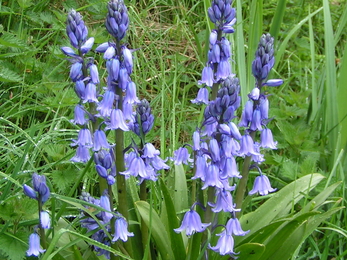Each year, organisations across the UK work to raise awareness of the impacts of invasive non-native species (INNS). Last week, the Rivers Team highlighted invasive species in Essex, and the problems they cause, across our social media channels. If you didn’t catch it, don’t worry. Here’s all you need to know:
Invasive Non-Native Species Week
What are invasive non-native species?
An invasive non-native species (INNS) is one that has come from somewhere it wouldn’t normally be able to colonise our shores from, like a country halfway across our planet! They have a significant impact on our local wildlife. Many lead to extinctions of our own species, with devastating impacts. An example is Spanish bluebells. If they get into our woodlands, they will hybridise with our own bluebells and completely change the character of those woodlands.
How are they spread?
Human activity is the main cause of invasive non-native species. This can occur in a multiple of ways: through international trade of products like timber, desire for ornamental ‘exotic’ plants, the importation of non-native species (e.g., American mink), or through the global pet trade (e.g., American bullfrog). INNS can also travel by attaching themselves to water vehicles or equipment such as fishing gear and even wellie boots! The spread of these can be unintentional or intentional.
Why are they a problem?
Although most non-native species do not pose a threat, those that become invasive can be problematic. They can dominate our ecosystems, reducing food and light availability for native wildlife and plants. In river habitats, floating pennywort can crowd the water surface – growing up to 20cm a day - and restrict light and oxygen reaching the water itself. Not only is this bad news for river ecosystem health, it also creates problems for recreational angling and boating.
Some of our most loved native wildlife species have also been hit hard by invasive predators as they haven’t evolved together, and therefore have no natural defence. Water vole populations have plummeted due to American mink predation, and red squirrels are now only found in pockets across the UK.
The management of NNIS has also cost the UK over £5bn since the 1970.
What is being done to prevent this?
We work with volunteers to remove Himalayan balsam from our riverbanks, which can overwhelm native plants and reduce plant diversity.
We also work on floating pennywort removal with partners such as Essex and Suffolk Water and Essex Waterways and fundraise to employ contractors to pull the plant out of our waterways. As a result of these efforts, floating pennywort has now been removed across most of the River Chelmer!
We have also worked to exclude mink from certain areas to help water vole populations, that they predate upon since they are the leading cause for their 90% decline. This has helped water voles to return rapidly across a large landscape in the Eastern region and is a real success story for how careful management of NNIS can help our native wildlife.
How can you help?
Our rivers are an immensely important part of our urban and rural landscapes and are home to some of the most diverse wildlife in the UK. In recent years we have seen more and more communities stand up for our rivers, so this week we are launching our River Champions project to support people safeguard, enhance, and restore Essex’s rivers. Actions could include tree planting, awareness campaign, litter picking, pollution watch and of course invasive species removal like Balsalm bashing!
Hear from the Rivers Team and colleagues across the Trust as they touch on the different themes of Invasive Non-Native Species Week!





